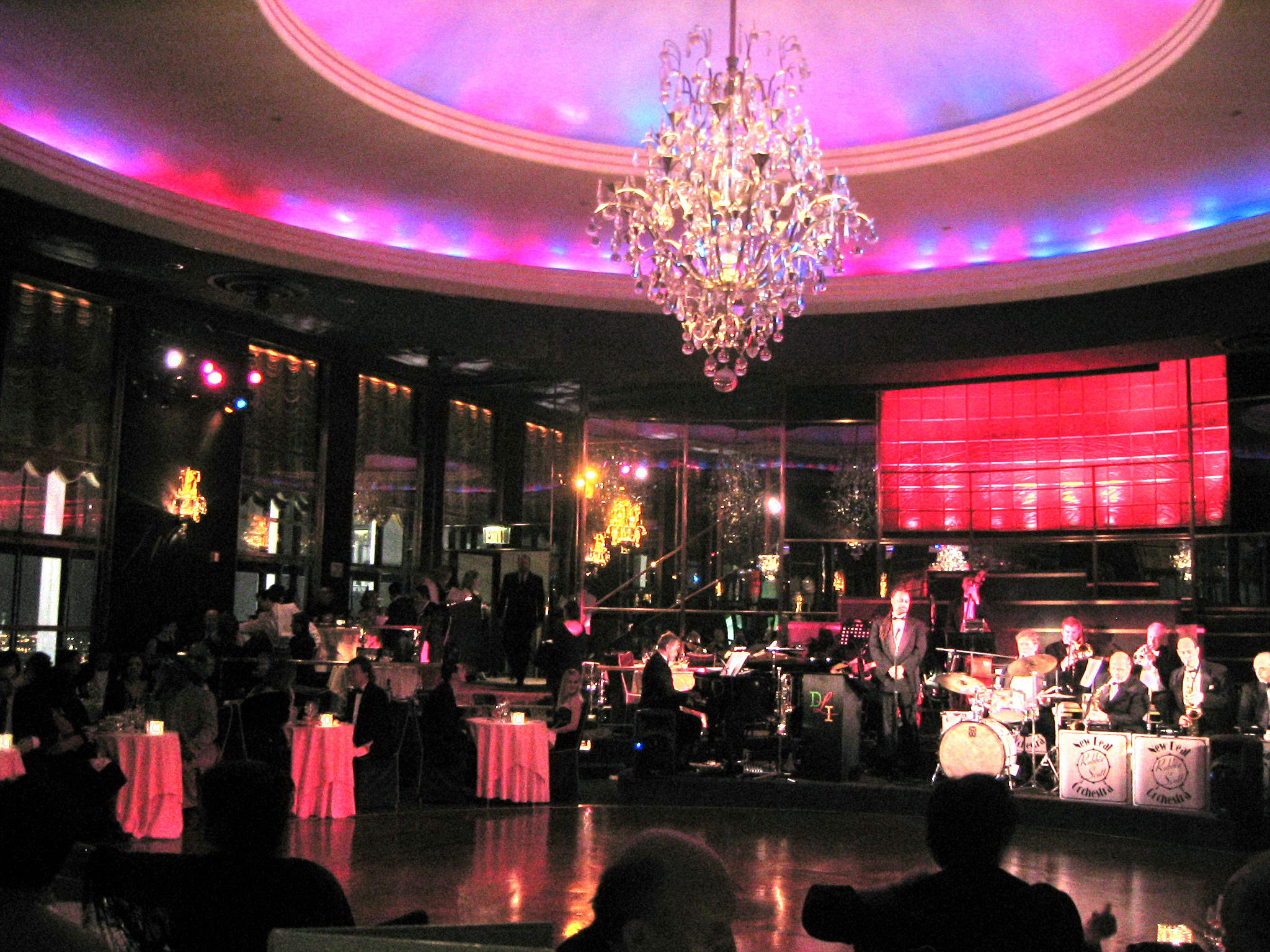
Rainbow Room
The Rainbow Room is a private event space on the 65th floor of 30 Rockefeller Plaza at Rockefeller Center in Midtown Manhattan, New York City. Run by Tishman Speyer, it is among the highest venues in New York City.
This article is about the New York City restaurant. For the Los Angeles nightclub, see Rainbow Bar and Grill. For the former Denver dance hall, see Rainbow Ballroom.Rainbow Room
October 3, 1934 (original restaurant)
Master French Chef Jacques Sorci
Classic and contemporary American
Jackets required (for men only)
10112
United States
300
Required except on Sunday mornings and Monday nights
October 16, 2012
2505
Restaurant interior
Opened in 1934, it was a focal point for the city's elite, as well as one of the United States' highest restaurants above ground. The Rainbow Room closed in 1942, due to World War II, and reopened in 1950. It received renovations in 1965 and 1985–1987, both of which sought to restore its original 1930s decor. Suffering from a decline in business following the financial crisis of 2007–08, the Rainbow Room closed in 2009. In 2012, the Rainbow Room was declared a landmark by the New York City Landmarks Preservation Commission. The restaurant reopened in 2014, following a renovation, serving classic and contemporary American cuisine. In 2017, the American Institute of Architects gave the Rainbow Room an award for outstanding interior architecture. The restaurant closed in 2020 due to the COVID-19 pandemic and reopened for private events in 2021.
Reception[edit]
Historically, the Rainbow Room has had a reputation as an important place for famous high society people. In 1942, Dance Magazine wrote, "The Rainbow Room is unique in many ways. The highest 'high spot' in the world, it is also the super night club in the world of the dance. From the beginning the Rainbow Room has done the unexpected, sponsored the new, and set the fashion for the rest of the dance world to follow."[112] A New York Times article in 1965 noted that the Rainbow Room's clientele included "actors, debutantes, tourists, businessmen and secretaries" who flocked to the Rainbow Room for the $9.50 prix fixe dinner.[44] A dining guide in the Times, published in 1975, described the eclectic mixture of patrons. The restaurant itself was described as having a "curious surprise" in the form of "a feeling of intimacy, for all the expected splendor, partly because of the encircling sweep of Manhattan lights through the tall windows 65 stories above the street."[113] A 1988 edition of Restaurant Business stated that "the Rainbow Room immediately became the dining/dancing mecca of sophisticated New Yorkers" immediately after it opened.[114]
In 1989, New York magazine mentioned that the Zagat Survey had rated the Rainbow Room as having the best decor in New York City.[115] New York itself later described the Rainbow Room as "one place true New Yorkers expect never to visit. Except, of course, when you have to: For a show-off wedding, an out-of-towner dinner, or just to satisfy your curiosity about whether it lives up to the romantic lore."[116] A 2005 review of the restaurant called it an "overrated bar" with "corporate phony" Art Deco decorations.[117]
In December 2014, after the restaurant's reopening, Zachary Feldman of The Village Voice described the space before 2009 as a "drab husk of its former self" and praised the New American supper cuisine with live acts as evidence that "the Rainbow Room has bounced back better than ever".[108] Writing in 2016, Claire Stern of InStyle lauded the brunch menu as being "as delicious as it is playfully presented".[111] The Post's Cuozzo called the brunch menu "worth $95 a head, not including liquor".[85] Zagat Guides gave the new Rainbow Room an average of 4.5 of 5 stars in its "Food", "Decor", and "Service" categories.[106]